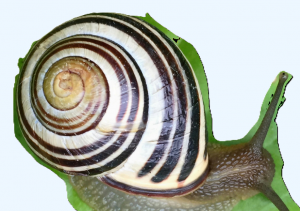In the skincare world, there exists a trend that might initially raise eyebrows but has gained a dedicated following: snail mucin. While the idea of slathering one’s face with the secretion of these slow-moving creatures may seem bizarre, the science behind it and the results it promises have propelled it into the mainstream beauty industry.
Derived from the mucous secreted by snails, snail mucin has been touted for its hydrating, soothing, and skin-rejuvenating properties. Originating from ancient Greece where snail slime was used for its medicinal benefits, and popularized in Korean skin care routines, this unconventional skincare ingredient has found its way into modern beauty routines, sparking curiosity and intrigue among skincare enthusiasts worldwide.
At the heart of its efficacy lies a potent combination of glycoproteins, hyaluronic acid, glycolic acid, and peptides. These components work in harmony to deeply hydrate the skin, promote collagen production, and accelerate skin regeneration, thereby reducing the appearance of fine lines, scars, and hyperpigmentation.
Despite its growing popularity, the journey of snail mucin from garden-dwelling gastropods to high-end beauty shelves has not been without controversy. Questions surrounding ethical sourcing practices and animal welfare have prompted some consumers to scrutinize the industry’s methods. However, reputable brands emphasize cruelty-free extraction processes, ensuring the well-being of the snails involved.
Moreover, the scientific community has conducted research to substantiate the claims surrounding snail mucin’s skincare benefits. Studies have demonstrated its efficacy in wound healing, acne treatment, and overall skin rejuvenation, lending credibility to its inclusion in skincare formulations.

Mucins, the primary constituents of mucus responsible for its properties, are heavily glycosylated proteins produced in epithelial cells. They come in two types: membrane-bound mucins, acting as cell markers and protective agents, and secreted mucins, which form mucous membranes and play vital roles in various physiological functions. Recent advancements in omics technologies have expanded the exploration of gastropod mucins, showcasing their potential in diverse fields such as medicine, biotechnology, and chemistry. Nevertheless, there is still a gap in understanding the hierarchical structures of mucins and their diverse functionalities.
Snail mucus has emerged as a significant resource in wound research due to its healing properties. Studies have demonstrated the efficacy of mucins derived from the Helix aspersa (Garden Snail) in facilitating skin regeneration following acute radiodermatitis, a common side effect of radiotherapy. Garden snail mucus has been found to enhance healing rates by regulating antioxidants and free radicals, as well as improving erythema and reducing photoaging in rat models. These findings suggest its potential not only in treating superficial injuries but also in addressing internal wounds (Michael, 2012; Etim et al., 2016; Hymes et al., 2006; Nguyen et al., 2020; Lim et al., 2020).
In conversation with Dr. Sophia J.T. Lee, a dermatologist at the forefront of skincare innovation, she elucidates the mechanisms behind snail mucin’s effectiveness. “The mucin secreted by snails contains a unique blend of proteins and antioxidants that can significantly benefit the skin. Its ability to hydrate and repair damaged skin barriers makes it a valuable addition to skincare routines,” Dr. Lee explains.
Beyond its scientific merits, the allure of snail mucin lies in its sensorial experience. With a lightweight texture and quick absorption, skincare enthusiasts praise its non-greasy feel and gentle nature, making it suitable for all skin types, including sensitive and acne-prone skin.
As the beauty industry continues to evolve, embracing unconventional cosmetic ingredients and holistic approaches to skincare, snail mucin stands as a testament to the innovative spirit driving skincare products innovation. Its journey from garden curiosity to skincare staple underscores the transformative power of nature’s humble wonders.
In the words of beauty aficionado and avid snail mucin user, Emily Chang, “It may sound strange at first, but once you experience the results, you’ll understand why snail mucin has earned its place in the skincare spotlight. It’s not just a trend; it’s a game-changer.”
In conclusion, while snail mucin may have started as a niche trend, its efficacy and allure have propelled it into the mainstream beauty industry, where it continues to captivate skincare enthusiasts with its promise of radiant, rejuvenated skin. As consumers embrace the power of nature’s unconventional treasures, snail mucin stands as a shining example of beauty innovation inspired by the natural world.
Snail Mucin References
Advancing Discovery of Snail Mucins Function and Application
HelixComplex snail mucus exhibits pro-survival